
The Week In Charts: GST Reboot, H-1B Visa Clampdown, Govt's Food Price Promise
This week saw a mixed pass-through of GST rate cuts to consumers, a one-time H-1B visa fee of $100,000 set by US President Donald Trump, government assurances that food prices will remain in check despite floods in several agricultural states, and cost overruns of large infrastructure projects.
Here's a compilation of this week's news in numbers.
GST revamp has mixed resultsThe massive revamp of India's Goods and Services Tax (GST) came into effect earlier this week, raising expectations of cheaper products. The automobile sector was quick to announce it was passing on the benefits to consumers. Several fast-moving consumer goods (FMCG) companies made similar announcements for goods including soaps, shampoos, milk and dairy products.
Also Read | Do tax cuts boost growth? What history tells us about fiscal stimulus-in chartHowever, for smaller packages, companies such as Hindustan Unilever Ltd (HUL) and Bikaji Foods have chosen to add more volume to retain the ₹1, ₹5 and ₹10 price points, Mint reported. While a full pass-through of GST cuts could pull inflation down by up to 1 percentage point over the next 12 months, a partial pass-through may limit this to just 30-50 basis points, economists estimate.
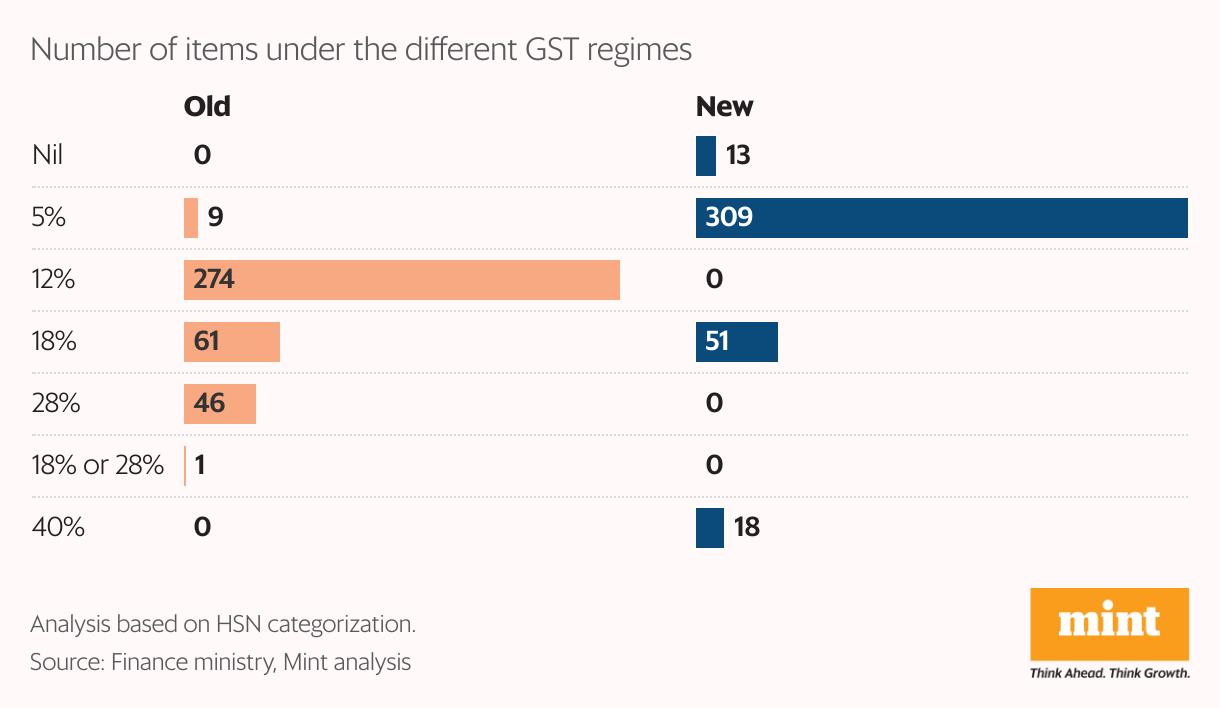
Trump's immigration crackdown
US President Donald Trump signed an executive order last week imposing a $100,000 one-time fee on new H-1B visa applications, disincentivising the hiring of foreign workers by companies in the US. The move will particularly hit Indian employees, who account for more than 70% of all H-1B visa holders, and India's information technology (IT) companies, which rely on them.
Also Read | America isn't the only Western nation shutting its doors to skilled IndianFor context, the one-time fee is higher than the annual compensation of many workers and could double the cost for companies sponsoring the visa, at least in the first year. Women applicants, who typically earn less than men, may be at an even greater disadvantage.
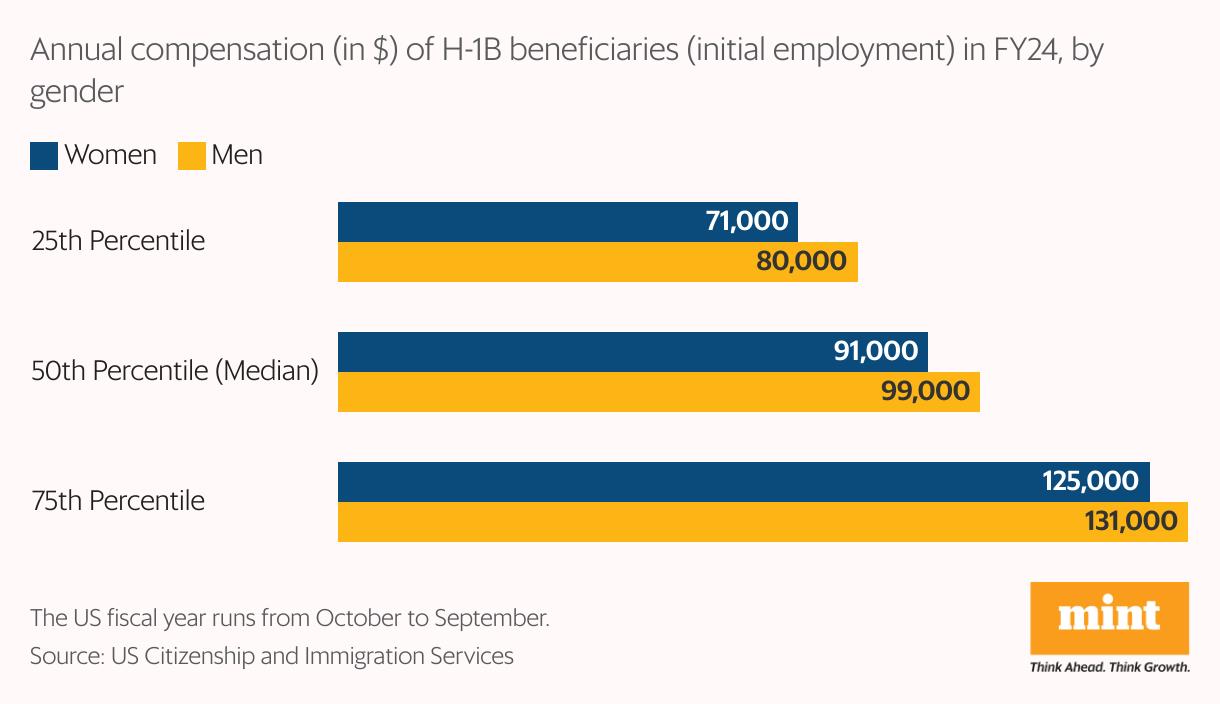
Food price promise
Despite the devastating floods in key agricultural states such as Punjab and Haryana, the Indian government is confident of keeping prices in check over the next year. The consumer affairs ministry recently assured the Reserve Bank of India (RBI) that food prices would remain stable through to July 2026, Mint reported, quoting people familiar with the matter. Inflation has fallen sharply over the past year, thanks mainly to a steep decline in food prices, especially of vegetables. While inflation is expected to remain low, economists warn torrential rainfall could put upward pressure on prices.
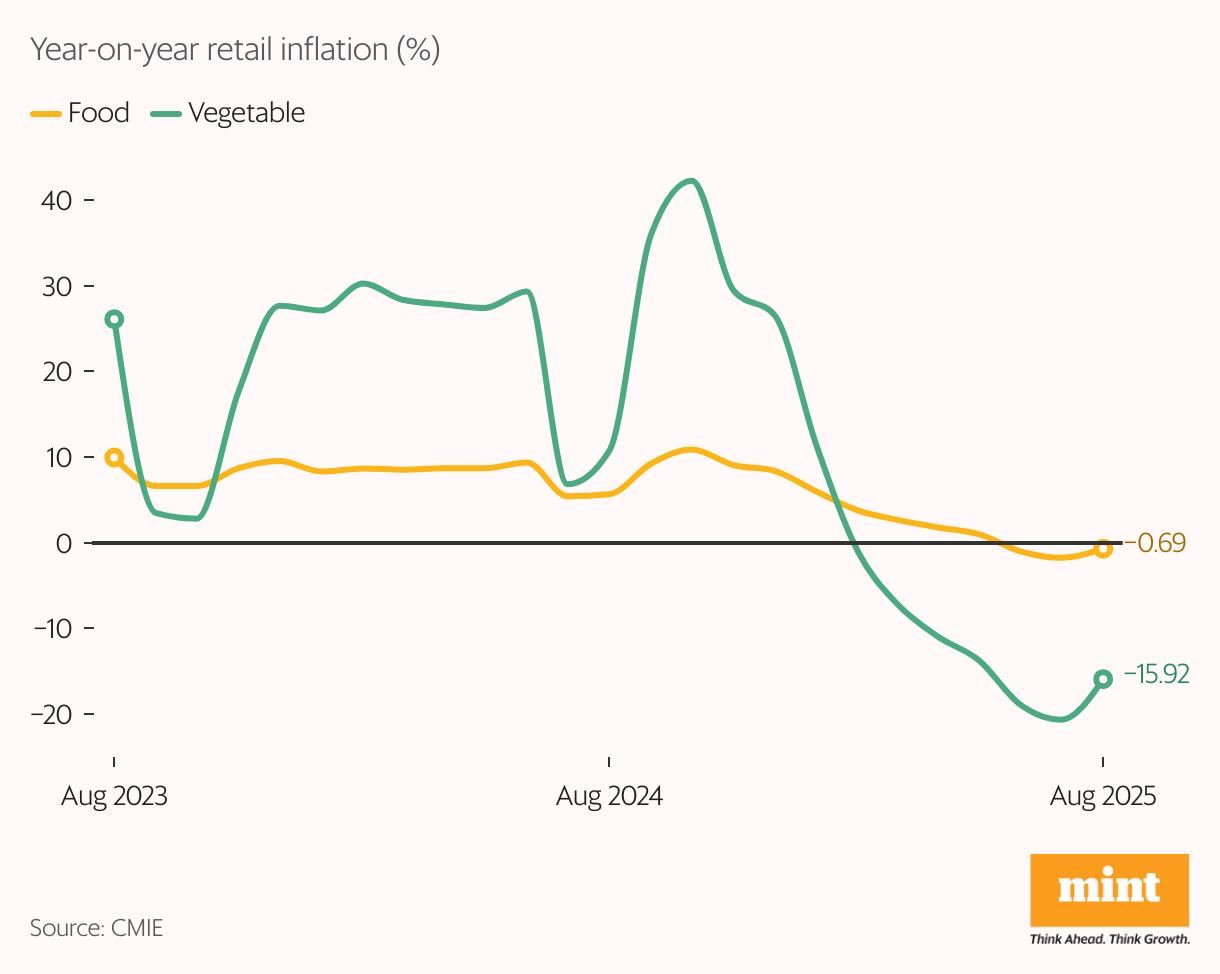
Numbers in the news
₹11.5 trillion: The potential capital expenditure the government could achieve in 2025-26, exceeding the budget estimate by about ₹30,000 crore.
6.3%: The year-on-year growth in output of India's eight core infrastructure industries in August, the fastest increase in 13 months.
₹2,400 crore: What food delivery giant Swiggy made from selling its stake in ride-hailing company Rapido to Prosus on Tuesday.
₹69,725 crore: The incentive package the union cabinet approved on Wednesday to promote domestic ship ownership and enhance port infrastructure.
100,370: Estimated housing sales across India's top nine cities in July-September, down 4% from a year ago, owing to lower demand in Mumbai and Pune, according to PropEquity.
Also Read | How NPS has grown from a govt pension plan into a high-growth equity be Startup funding: the vibes are backThe buzz around vibe coding has allowed Indian startups developing these artificial intelligence platforms to secure significantly larger funding rounds than the $1-10 million typically seen in early-stage deals, Mint reported.
Indian vibe coding startups Rocket, Emergent and Composio have each raised between $15 million and 25 million this year, reviving investor interest in the space following the collapse of no-code platform Builder. Vibe coding blends AI with traditional software development tools, allowing users who lack coding knowledge to create apps by typing in prompts.
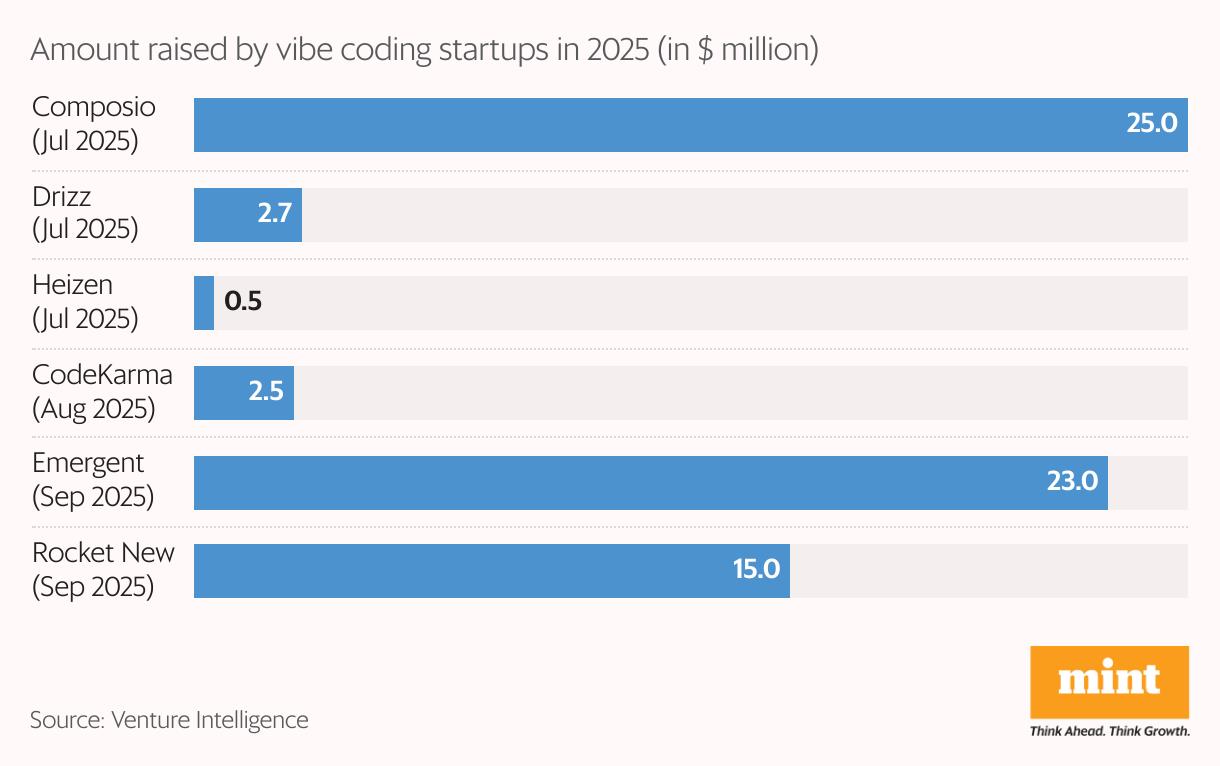
Infra projects are budget busters
Delays and cost overruns are a common problem for large infrastructure projects in India. According to government data as of August, the railway ministry had the highest cost overrun, with ongoing projects worth ₹150 crore exceeding the original budget by more than 20%. The railway ministry has more infrastructure projects than other ministries. The power ministry also had substantial cost overruns, with projects exceeding the original budget by 17%. Projects under the petroleum and natural gas ministry surpassed their initial cost by 16%.
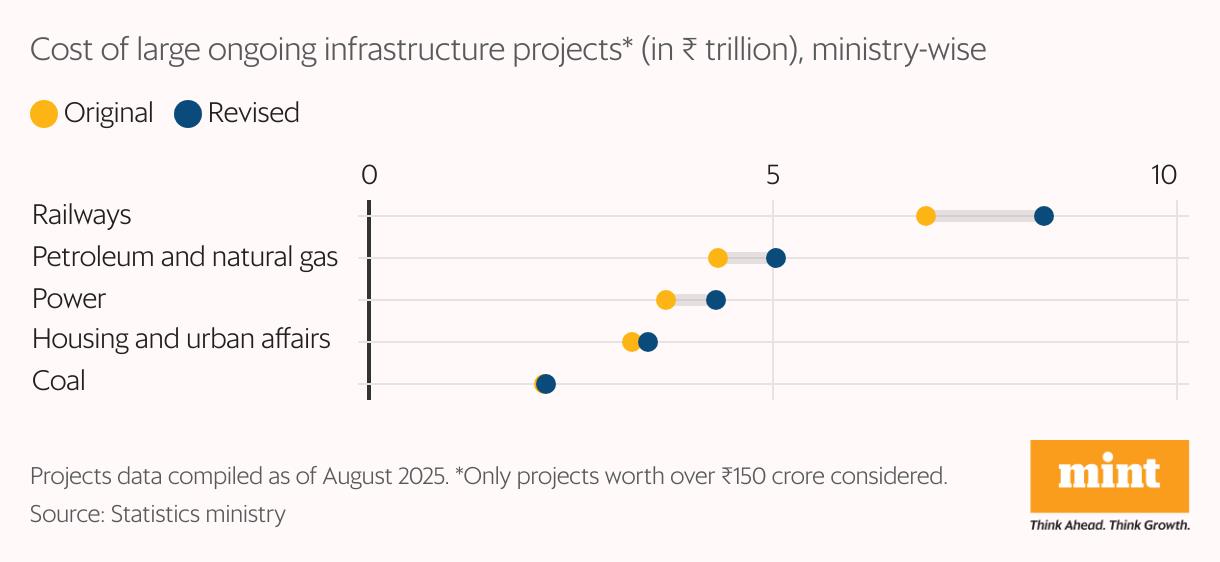
Legal Disclaimer:
MENAFN provides the
information “as is” without warranty of any kind. We do not accept
any responsibility or liability for the accuracy, content, images,
videos, licenses, completeness, legality, or reliability of the information
contained in this article. If you have any complaints or copyright
issues related to this article, kindly contact the provider above.
Most popular stories
Market Research

- Solo Leveling Levels Up: Korean Billion-Dollar Megafranchise Goes Onchain With Story
- Freedom Holding Corp. (FRHC) Shares Included In The Motley Fool's TMF Moneyball Portfolio
- From Tracking To Thinking: Edgen's“Smart Portfolio” Brings Portfolio-Native Multi-Agent Reasoning To Asset Portfolios
- Cregis At FOREX Expo 2025: Connecting Forex With Crypto Payment
- Currency Relaunches Under New Leadership, Highlights 2025 Achievements
- Cregis At TOKEN2049 Singapore 2025: Unlocking The Next Frontier Of Adoption



















Comments
No comment